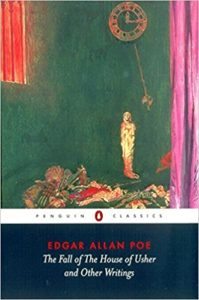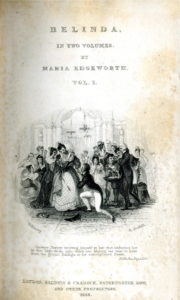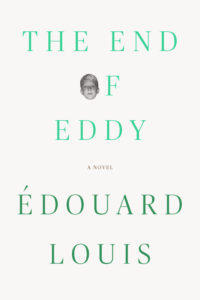Literary Persons and Medieval Fiction in Bernard of Clairvaux’s Sermons on the Song of Songs
by Julie Orlemanski
 Like many exegetes before him, the twelfth-century Cistercian abbot Bernard of Clairvaux regarded the lovers in the Song of Songs as allegorical fictions. Yet these prosopopoeial figures remained of profound commentarial interest to him. Bernard’s Sermons on the Song of Songs returns again and again to the literal level of meaning, where text becomes voice and voice becomes fleshly persona. This essay argues that Bernard pursued a distinctive poetics of fictional persons modeled on the dramatic exegesis of Origen of Alexandria as well as on the Song itself. Ultimately, the essay suggests, Bernard’sSermons form an overlooked episode in the literary history of fiction.
Like many exegetes before him, the twelfth-century Cistercian abbot Bernard of Clairvaux regarded the lovers in the Song of Songs as allegorical fictions. Yet these prosopopoeial figures remained of profound commentarial interest to him. Bernard’s Sermons on the Song of Songs returns again and again to the literal level of meaning, where text becomes voice and voice becomes fleshly persona. This essay argues that Bernard pursued a distinctive poetics of fictional persons modeled on the dramatic exegesis of Origen of Alexandria as well as on the Song itself. Ultimately, the essay suggests, Bernard’sSermons form an overlooked episode in the literary history of fiction.
Image: Francisco Ribalta, Christ embracing Saint Bernard, Museo del prado, madrid
The essay begins:
Osculetur me osculo oris sui. “Let him kiss me with the kiss of his mouth.” In the first words of the Song of Songs, a voice announces itself, and with it, a corporeal figure comes flickeringly into existence. A voice speaks from the page and summons a body around it. The utterance implies a literary person not merely in the sense in which Quintilian explains the trope of prosopopoeia or fictio personarum, remarking, “We cannot of course imagine a speech except as the speech of a person.” No, with its first-person object, “Let him kiss me,” the textual voice refers to its own body, a body that can be kissed, with a mouth that is an organ not just of speech but of sensation and erotic action. The o of this open mouth—of the speaker’s mouth but also of any reader who reads the words aloud—is echoed visually on the written page: Osculetur . . . osculo oris. In a medieval manuscript, the initial capital would likely be written on a larger scale, emphasizing the graphic dimensions of the letter, and in an illuminated Bible it might even be filled the with the image of a man and a woman kissing. In the likeness shared between the o of the speaker’s mouth as she seeks a kiss, the o of a reader’s mouth pronouncing the verse, and the o of the letters on the manuscript page, the mixed ontology of literary persons shimmers into view. Is this utterance, Osculetur me osculo oris sui, something that I perceive or something I do? Where is the body that speaks? Suspended between a scene to watch and a script to follow, it seems to belong at once to mimesis and performance, fiction and rhetoric.
This verse’s associative movement from text to corporealization was a point of fascination for readers and writers in the Middle Ages. Its sudden drama, its intimate but peculiar phrasing, and the crosshatched invitations both to watch a spectacle of desire unfolding and to make this speaker’s voice one’s own helped render the Song of Songs the most frequently interpreted biblical book in medieval Christianity. The present essay considers an especially sophisticated and influential instance of that exegesis, the Sermons on the Song of Songs (Sermones super Cantica Canticorum, hereafter SCC) by Bernard of Clairvaux (d. 1153), an undertaking that occupied the final eighteen years of the Cistercian abbot’s life and that survives in more than a hundred manuscripts.
In the first of the eighty-six sermons in the collection, Bernard launches his consideration of the language of the Song by imploring, “Tell us, I beg you, by whom, about whom, and to whom it is said: ‘Let him kiss me with the kiss of his mouth.’” Bernard’s words, we might notice, are at once a breathless plea for language to explain the personae it proliferates and, too, a canny enactment of that proliferation, conjuring an I, a you, and a we of its own. Grammatical persons multiply, and Bernard presses the urgency of their reference. In effect, he plunges his audience into a fundamental problem of understanding the Song. Because the Song consists entirely of direct speech, a series of unattributed lyric utterances, even the most rudimentary sense-making requires figuring out who is talking to whom. As Bernard begins to describe these speakers, his exegesis shows itself quiveringly alert to the operations of pronominal reference, deixis, and other indices of address. But it is not only the correct identification of speakers that interests him. These speakers become, I suggest, rhetorical resources for the SCC. Bernard’s preacherly style pursues a distinctive poetics of fictional persons, modeled in part on the Song of Songs itself. In its twelfth-century context, the SCC articulated new explanations for the Song’s carnal rhetoric of fictional bodies and, at the same time, operationalized that rhetoric in a distinctive program of literary experience.
What does it mean to discuss the Song of Songs in terms of fiction? From the point of its incorporation into the Hebrew Bible, the Song raised questions about the interpretive status of its central figures, a feminine and a masculine speaker who are accompanied intermittently by a chorus of companions. Nowhere are God or his chosen people mentioned. Jewish and early Christian exegetes concurred that the Song’s extraordinarily frank erotic images—“your breasts better than wine,” “his left arm under my head and his right hand will embrace me,” “your lips drip honeycomb”—were not to be interpreted straightforwardly, referring to actual individuals’ erotic love. Rabbis in the second and third centuries taught that the Song was a figuration of the love between God and the people of Israel, and the early Christian commentary of Hippolytus of Rome (d. c. 236) followed suit with an ecclesiological interpretation. The foundation for the Song’s exegesis in the Latin West was undoubtedly Origen of Alexandria (d. c. 253), whose Commentary on the Song of Songs (Commentarium in Cantica Canticorum), brought together the allegory of the church with that of the individual soul: the book is sung “after the fashion of a bride to her bridegroom, who is the word of God, burning with heavenly love. And deeply indeed did she love him, whether we take her as the soul made in his image or as the church.” The ecclesiological interpretation prevailed in subsequent centuries, shaping influential commentaries by Pope Gregory I (d. 604) and the Venerable Bede (d. 735), until the twelfth century, when tropological interpretation, focused on the individual soul, became a prominent framework as well, thanks especially to Bernard’s influential sermons.
For most medieval readers, then, the bodies conjured by the Song of Songs were rhetorical specters, effects of a divinely inspired discourse. Bernard fits squarely within this tradition of regarding the Bride and Bridegroom as allegorical fictions—but he does so with a crucial difference. The fictive bodies of the Song remained of profound commentarial interest to him. Unlike other medieval exegetes, who largely ignored the literal level of meaning in their expositions, Bernard returned again and again to the mimetic operations of the Song’s language, in which text becomes voice and voice becomes fleshly, fictional persona. He not only engaged in the well-established practice of prosopological interpretation (or the effort to resolve scriptural ambiguity by identifying the personae of speakers and addressees) but also pursued those explanations into new prosopopoeial invention. In mixing interpretation and literary person-making, Bernard had several models at his disposal. These included the devotional recitation of the Psalms in the Divine Office, the schoolroom exercise of adlocutio or prosopopoeia, and, finally, the “dramatic” analysis offered in the Commentary by Origen. Although Bernard has long been recognized as having revived Origen’s focus on the individual, tropological significance of the Song, I suggest that the Alexandrian’s tendency to amplify the Song’s fictive scenes in a self-consciously theatrical mode was also an important influence on the SCC. Both Origen’s Commentary and Bernard’s Sermons consolidate the Song’s fleetingly evoked personae into durable referents that sustain the extended exercise of imagination.
It is true that Bernard does not refer to the Song of Songs as a fiction (fictio or res ficta), nor does he draw on closely related terms like fabula and poetria—terms colored by their association with the works of pagan authors. The abbot shows little interest in such idioms of medieval literary theory. Instead, it is at the level of rhetorical design that his sermons testify to a fascination with what might be called the cognitive realities of fiction, or how language induces mental images that provoke sensory and emotional responses in an audience. In the case of the eroticized bodies of the Song, however, those images were possessed of a crucial unreality as well. If exegetical tradition had colored the Song’s celebration of heterosexual love with a certain tincture of disbelief—looking past carnal passion to spiritual union—Bernard invited his audience into the willing suspension of that disbelief, as it were. Ultimately, I suggest, the Sermons form an overlooked episode in the history of literary fiction. Though the twelfth-century secular genres of courtly romance and Ovidian love poetry have loomed large in fiction’s historiography, devotional literature likewise contributed to the changing semantics of imaginative writing in the period.
In what follows, I concentrate my analysis on the figure of the Bride in the first nine sermons of the SCC to show how the sermons both comment on and incorporate the Song’s carnal rhetoric of fictional bodies. I then compare this prosopopoeial poetics to the Psalms performed in the Divine Office, grammar-school exercises in prosopopoeia, and, most extensively, to Origen’s Commentary on the Song. I suggest in closing that the mode of fictionality pursued in the SCC, one uniquely alert to the dynamics of reception and the mixed ontology of literary persons, sheds new light on twelfth-century developments in fiction. Continue reading free of charge for a limited time …
 JULIE ORLEMANSKI is Associate Professor of English at the University of Chicago. Her monograph Symptomatic Subjects: Bodies, Medicine, and Causality in the Literature of Late Medieval England appeared in 2019 and was shortlisted for the British Society for Literature and Science book prize. She is currently at work on two book-length projects. One concerns prosopopoeia in medieval writing. The other follows the tangled genealogies of fictionality and disenchantment to argue for a comparative poetics of fiction.
JULIE ORLEMANSKI is Associate Professor of English at the University of Chicago. Her monograph Symptomatic Subjects: Bodies, Medicine, and Causality in the Literature of Late Medieval England appeared in 2019 and was shortlisted for the British Society for Literature and Science book prize. She is currently at work on two book-length projects. One concerns prosopopoeia in medieval writing. The other follows the tangled genealogies of fictionality and disenchantment to argue for a comparative poetics of fiction.

 “This isn’t right.” Almost as soon as the man resembling Martin Luther King Jr. has begun to speak, he interrupts himself in frustration. “I accept this honor,” he’d been saying, “for our lost ones, whose deaths pave our path, and for the twenty million Negro men and women motivated by dignity and a disdain for hopelessness.” What does he think isn’t right? Is it the racial oppression he has been evoking? Or is it the felt inadequacy of his words to that injustice? As the man turns away from us, we find that he has been speaking into a mirror, and that he is frustrated in the immediate context by his efforts at getting dressed . “Corrie”—it is King, we now understand, and he’s not alone; his wife Coretta is with him—“this ain’t right.” “What’s that?” she asks, entering from another room. “This necktie. It’s not right.” “It’s not a necktie,” she corrects him, “it’s an ascot.” “Yeah, but generally, the same principles should apply, shouldn’t they? It’s not right.”
“This isn’t right.” Almost as soon as the man resembling Martin Luther King Jr. has begun to speak, he interrupts himself in frustration. “I accept this honor,” he’d been saying, “for our lost ones, whose deaths pave our path, and for the twenty million Negro men and women motivated by dignity and a disdain for hopelessness.” What does he think isn’t right? Is it the racial oppression he has been evoking? Or is it the felt inadequacy of his words to that injustice? As the man turns away from us, we find that he has been speaking into a mirror, and that he is frustrated in the immediate context by his efforts at getting dressed . “Corrie”—it is King, we now understand, and he’s not alone; his wife Coretta is with him—“this ain’t right.” “What’s that?” she asks, entering from another room. “This necktie. It’s not right.” “It’s not a necktie,” she corrects him, “it’s an ascot.” “Yeah, but generally, the same principles should apply, shouldn’t they? It’s not right.” Inventing counterfactual histories is a common pastime of modern day historians, both amateur and professional. We speculate about an America ruled by Jefferson Davis, a Europe that never threw off Hitler, or a second term for JFK. These narratives are often written off as politically inspired fantasy or as pop culture fodder, but in Telling It Like It Wasn’t, Catherine Gallagher takes the history of counterfactual history seriously, pinning it down as an object of dispassionate study. She doesn’t take a moral or normative stand on the practice, but focuses her attention on how it works and to what ends—a quest that takes readers on a fascinating tour of literary and historical criticism.
Inventing counterfactual histories is a common pastime of modern day historians, both amateur and professional. We speculate about an America ruled by Jefferson Davis, a Europe that never threw off Hitler, or a second term for JFK. These narratives are often written off as politically inspired fantasy or as pop culture fodder, but in Telling It Like It Wasn’t, Catherine Gallagher takes the history of counterfactual history seriously, pinning it down as an object of dispassionate study. She doesn’t take a moral or normative stand on the practice, but focuses her attention on how it works and to what ends—a quest that takes readers on a fascinating tour of literary and historical criticism. Catherine Gallagher
Catherine Gallagher This is not so surprising. Indeed, one of the first things to notice about the range of Anglo-American writers who, through channels of legitimation ranging from classroom syllabi to academic journals to crossover magazines, have become exemplars of the quality that English professors vaguely but confidently call “contemporary”—writers like Teju Cole, Maggie Nelson, Ben Lerner, and Tom McCarthy—is that they are all intensely aware of literature’s intimate relationship to academic work. McCarthy, one of the most frequently taught and talked about English-language writers of the twenty-first century, offers an especially illuminating case study in the current entwining of contemporary literature and contemporary criticism. As both a Man Booker Prize-nominated novelist (for 2010’s C. and 2015’s Satin Island) and a published literary theorist (2006’s Tintin and the Secret of Literature), McCarthy is not only a ubiquitous topic of conversations at literature conferences; he has also become, in recent years, a speaker at those same conferences, giving keynote addresses at the Louisville Conference on Literature and Culture in 2012 and at the Society for Novel Studies in 2016. If McCarthy’s public career reveals the increasingly permeable boundary between writers and critics in the contemporary moment, his novels narrate the consequences of this new professional permeability. In McCarthy’s hands, the contemporary novel has become an opportunity to reflect on the academic category of the contemporary itself. Halfway through McCarthy’s most recent novel, Satin Island, the narrator, a former academic turned “corporate anthropologist” named U., travels to Frankfurt for a conference. “The theme of the conference,” we are told, “was—for once!—not The Future. It was The Contemporary.” For U., this trending topic is
This is not so surprising. Indeed, one of the first things to notice about the range of Anglo-American writers who, through channels of legitimation ranging from classroom syllabi to academic journals to crossover magazines, have become exemplars of the quality that English professors vaguely but confidently call “contemporary”—writers like Teju Cole, Maggie Nelson, Ben Lerner, and Tom McCarthy—is that they are all intensely aware of literature’s intimate relationship to academic work. McCarthy, one of the most frequently taught and talked about English-language writers of the twenty-first century, offers an especially illuminating case study in the current entwining of contemporary literature and contemporary criticism. As both a Man Booker Prize-nominated novelist (for 2010’s C. and 2015’s Satin Island) and a published literary theorist (2006’s Tintin and the Secret of Literature), McCarthy is not only a ubiquitous topic of conversations at literature conferences; he has also become, in recent years, a speaker at those same conferences, giving keynote addresses at the Louisville Conference on Literature and Culture in 2012 and at the Society for Novel Studies in 2016. If McCarthy’s public career reveals the increasingly permeable boundary between writers and critics in the contemporary moment, his novels narrate the consequences of this new professional permeability. In McCarthy’s hands, the contemporary novel has become an opportunity to reflect on the academic category of the contemporary itself. Halfway through McCarthy’s most recent novel, Satin Island, the narrator, a former academic turned “corporate anthropologist” named U., travels to Frankfurt for a conference. “The theme of the conference,” we are told, “was—for once!—not The Future. It was The Contemporary.” For U., this trending topic is


 Maria Edgeworth (1767–1849) is famous for her bad plots. A contemporary reviewer of her 1814 novel Patronage complains that “the story is always the worst part of Miss Edgeworth’s novel.” There she consistently proves “inferior . . . to many of those that are vastly below her in everything else.” This backhanded compliment to a novelist publicly admired by Jane Austen and Sir Walter Scott may suggest some of the reasons that Edgeworth has fallen into neglect. Despite her popularity and widespread readership in her lifetime, particularly in nineteenth-century America, this Anglo-Irish writer of national tales and novels never fully entered the literary canon. If read at all, Edgeworth’s novels are studied in relation to questions of Irish identity and history, rather than as examples of the genre’s possibilities. This may indeed be attributable to a certain quality that many of her plots possess. In their broad outlines, they are unobjectionable, if not exciting. Their protagonists, whether old or young, male or female, aristocratic or working class, must learn to choose for themselves the way of life most productive of happiness. They need to overcome prejudice, indolence, misdirected sympathies, and unhealthy influences. The alleged badness of her plots, then, does not concern any unfamiliarity of outline. Nor does it derive from over-reliance on arbitrary events, chance encounters, or coincidences. Though these can certainly be found in Edgeworth’s plots, sometimes concentrated toward the end, they are arguably standard features of narrative and certainly of the novel by 1800. Rather, it seems that Edgeworth’s “carelessness” has to do with not sufficiently disguising the epistemological responsibilities placed on fictional plot by the development of experimental science. Her plots usually tell the story of how characters learn to think rationally. But this requires more than learning to distinguish between truth and lies, genuine and false stories or feelings. As one character in her novel Belinda (1801) puts it, “Our reasonings as to the conduct of life . . . must depend ultimately on facts.” For Edgeworth, then, plot becomes the means of producing legitimately objective facts within a fictive universe. In a twist in the dialectic of fictionality, plot has to produce a hierarchy of epistemological certainty within its own orderings.
Maria Edgeworth (1767–1849) is famous for her bad plots. A contemporary reviewer of her 1814 novel Patronage complains that “the story is always the worst part of Miss Edgeworth’s novel.” There she consistently proves “inferior . . . to many of those that are vastly below her in everything else.” This backhanded compliment to a novelist publicly admired by Jane Austen and Sir Walter Scott may suggest some of the reasons that Edgeworth has fallen into neglect. Despite her popularity and widespread readership in her lifetime, particularly in nineteenth-century America, this Anglo-Irish writer of national tales and novels never fully entered the literary canon. If read at all, Edgeworth’s novels are studied in relation to questions of Irish identity and history, rather than as examples of the genre’s possibilities. This may indeed be attributable to a certain quality that many of her plots possess. In their broad outlines, they are unobjectionable, if not exciting. Their protagonists, whether old or young, male or female, aristocratic or working class, must learn to choose for themselves the way of life most productive of happiness. They need to overcome prejudice, indolence, misdirected sympathies, and unhealthy influences. The alleged badness of her plots, then, does not concern any unfamiliarity of outline. Nor does it derive from over-reliance on arbitrary events, chance encounters, or coincidences. Though these can certainly be found in Edgeworth’s plots, sometimes concentrated toward the end, they are arguably standard features of narrative and certainly of the novel by 1800. Rather, it seems that Edgeworth’s “carelessness” has to do with not sufficiently disguising the epistemological responsibilities placed on fictional plot by the development of experimental science. Her plots usually tell the story of how characters learn to think rationally. But this requires more than learning to distinguish between truth and lies, genuine and false stories or feelings. As one character in her novel Belinda (1801) puts it, “Our reasonings as to the conduct of life . . . must depend ultimately on facts.” For Edgeworth, then, plot becomes the means of producing legitimately objective facts within a fictive universe. In a twist in the dialectic of fictionality, plot has to produce a hierarchy of epistemological certainty within its own orderings.
 Michael Lucey’s translation of
Michael Lucey’s translation of 